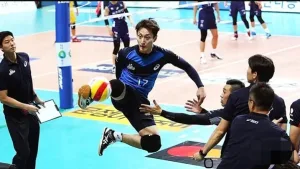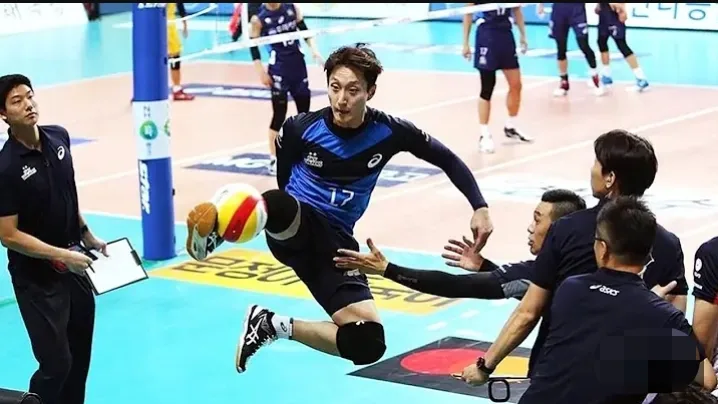Volleyball is a sport that offers a fascinating array of techniques and strategies, many of which involve the use of various parts of the body.
The use of body parts in volleyball raises so many questions, such as:
Can you kick the ball in volleyball?
Yes! Since the rule changes in 1999, the game has become more inclusive of different types of body contact, allowing players to use any part of their body to hit the ball.
This article will also delves into the specifics of body contact in volleyball, focusing on the use of feet, heads, and other body parts and answering some other common questions about these practices.
Can you kick in Olympic volleyball?

Yes, according to NCAA official rules and FIVB rules you can kick the ball in Olympic play. According to the official rules, the ball can touch any part of the body as long as it does not come to rest there.
Apply for Government Grants: Up to 250,000 available
This rule applies universally, from casual play to the highest levels of competition, including the Olympics. However, while it is legal to use your feet, it is not common practice due to control and precision considerations.
See Also: Beach Volleyball vs Indoor Volleyball: Similarities and Differences
Can you head the ball in volleyball?
Similar to using your feet, you can use your head to play the ball in volleyball. The rules state that any part of the body is permissible for ball contact, provided the ball does not come to rest. Heading the ball, like kicking, is not an illegal hit, but it is less common because it is generally more challenging to control the ball with the head compared to the hands or arms.
See Also: Volleyball Positions and roles
Apply for Government Grants: Up to 250,000 available
Does kicking a volleyball ruin it?
Kicking a volleyball does not inherently ruin it, but it can contribute to wear and tear. Volleyballs are designed to be durable, but repeated impacts with hard surfaces, such as a foot or knee, can cause damage over time. This is one reason why players prefer using their hands or forearms, which provide better control and are less likely to damage the ball.
See Also: Can You Play Volleyball While Pregnant
Can you kick the ball in professional volleyball?
In professional volleyball, players can kick the ball, adhering to the same rules that apply at all levels of play. While it is allowed, professional players typically avoid using their feet because it is harder to control the ball accurately. Precision and control are paramount in professional matches, and using hands and arms is far more effective in achieving this.
Can You Kick the Ball with Your Foot in Volleyball?
Yes, you can kick the ball with your foot in volleyball. The 1999 rule changes explicitly allowed for the ball to be played with any part of the body. However, kicking is rare and usually only happens in emergency situations where no other body part can reach the ball in time.
Can You Use Your Feet in Beach Volleyball?
Just like indoor volleyball, beach volleyball also permits the use of any part of the body, including the feet.
Beach volleyball players sometimes use their feet to save a ball that is low to the ground, but, as with indoor play, it is generally not the preferred method due to control issues.
See Also: 7 Types of Passes in Volleyball
Quick Fact
In volleyball, any contact you make with the ball is considered a hit. According to the official NCAA and FIVB rules, “the ball may touch any part of the body,” including the foot. This means that kicking the ball is a legal hit in both indoor and beach volleyball, as well as in high school play.
Number of Hits Allowed
Each team is permitted to hit the ball up to three times on their side of the net. The third hit must send the ball over the net to the opponent’s side. If a team hits the ball a fourth time before returning it, it results in a fault, and the opposing team earns a point.
An individual player can only make one hit before another player must contact the ball. If a player contacts the ball twice consecutively, such as by kicking it and then hitting it with their hand, it is considered a double hit, which is against the rules.
Purpose of Kicking
While kicking the ball is legal, it is generally not recommended. Using your hands and arms provides better control and accuracy.
Kicking is usually a last resort, such as when a libero chases a mishit ball out of bounds and cannot reach it with their hands, or when a player has fallen and can’t use their hands.Foot saves are more common in the back row or back line during a game. Despite being rare, there are some notable instances of successful foot plays in Olympic volleyball.
Trapping the ball
Unlike in soccer, where trapping the ball with your foot is a skillful move, doing so in volleyball is illegal. Volleyball rules require the ball to be hit, not caught.
If the ball lands on your foot without rebounding, it is considered a fault, similar to palming the ball, and the opposing team is awarded a point.
Can you serve with your foot?
Kick serves are technically legal in volleyball as long as the ball lands on the receiving team’s side of the court. However, they are rarely used because they are difficult to control and lack the velocity needed to prevent the opposing team from easily rallying.
Apply for Government Grants: Up to 250,000 available
Conclusion
While volleyball rules allow for the use of any part of the body to hit the ball, including feet, heads, and shoulders, practical play typically favors the hands and arms for their superior control and precision.
Kicking or using other body parts is usually a last resort in emergency situations. Whether playing in the Olympics, professional leagues, or on the beach, the principles of control and precision guide how players choose to interact with the ball.
Understanding these rules and their practical implications can enhance both the enjoyment and effectiveness of playing volleyball.
